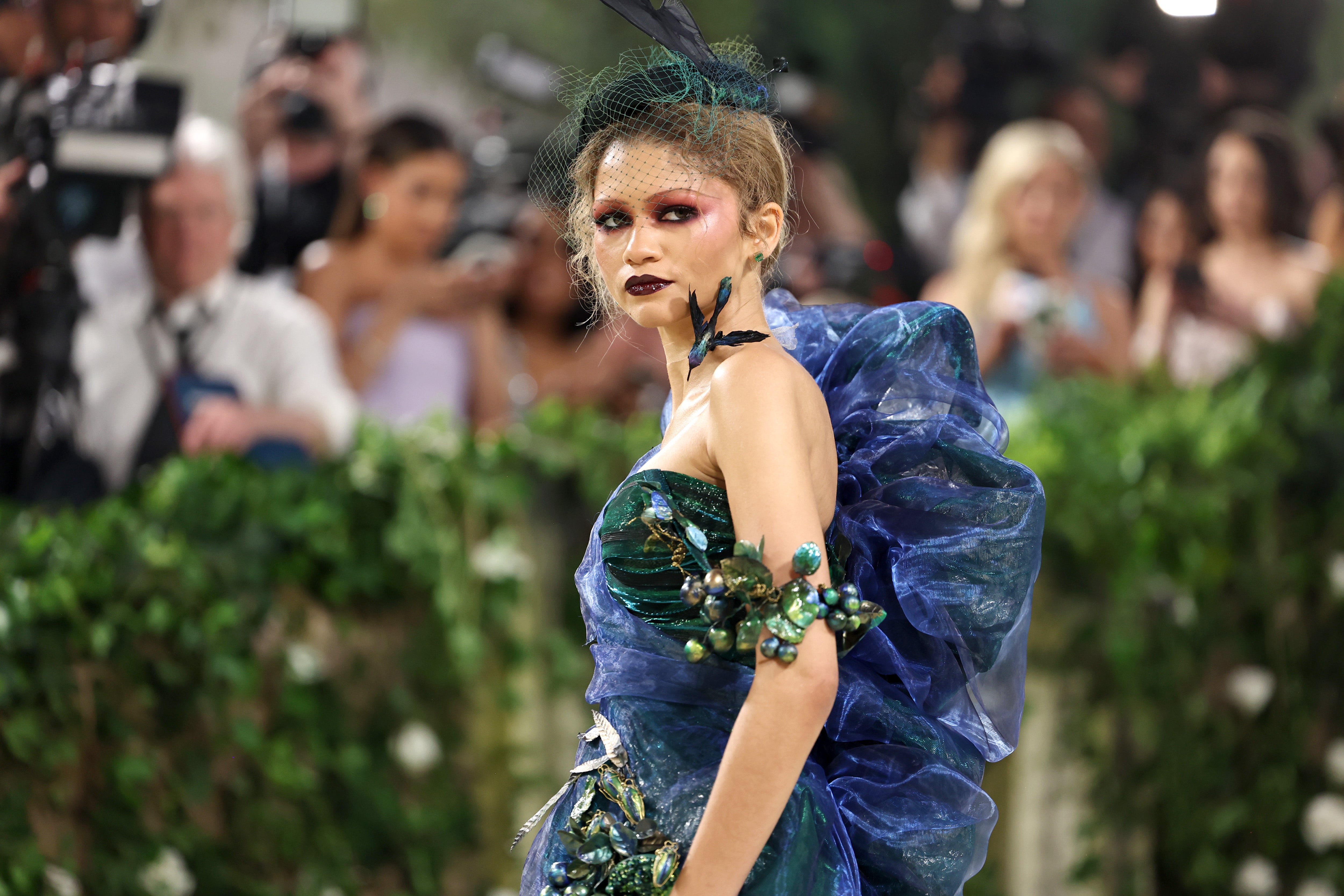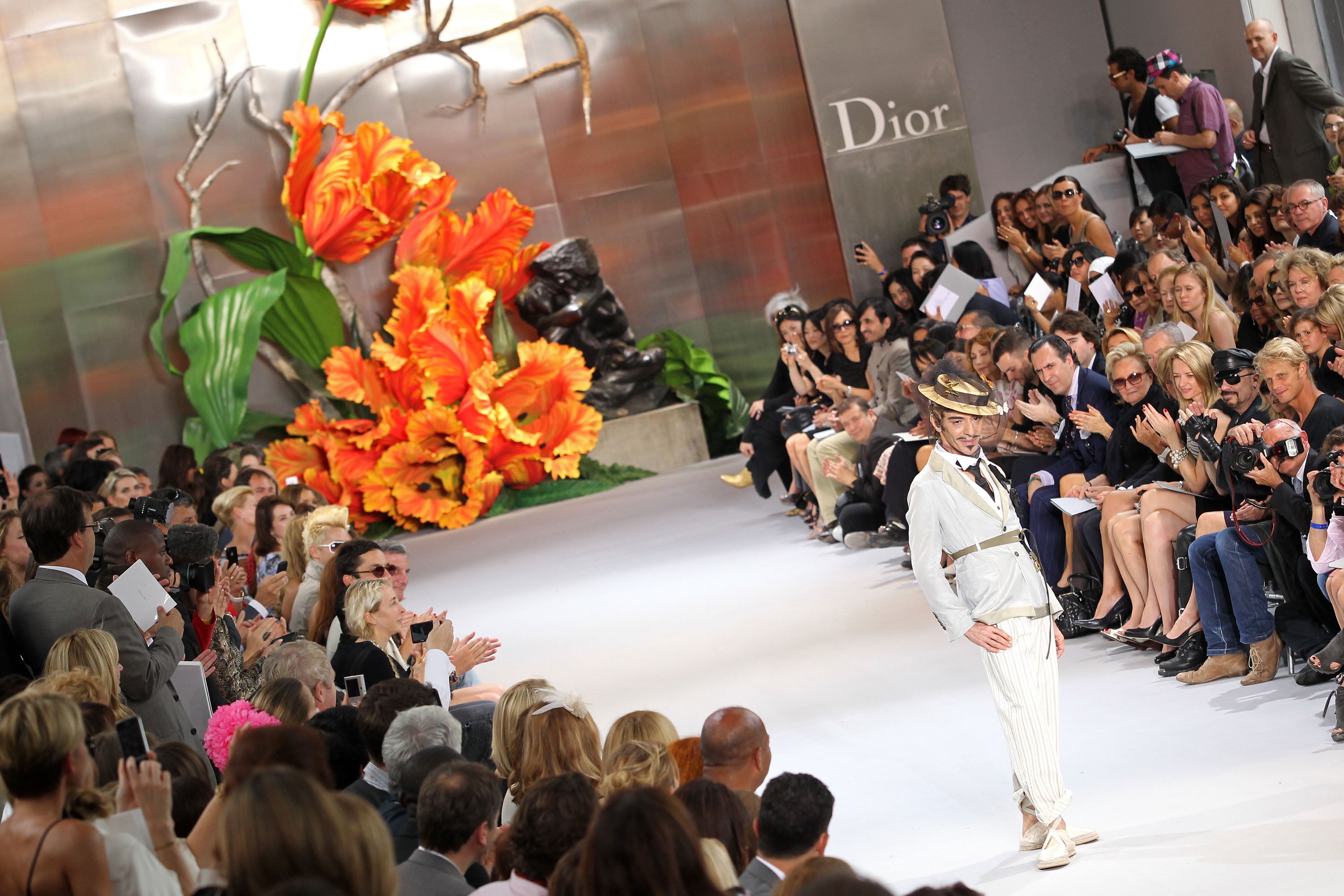The return of John Galliano will shake up a boring fashion industry – whether we like it or not
Stars including Zendaya and Kim Kardashian wore Galliano designs at this week’s Met Gala, suggesting that the controversial designer – who was effectively exiled after making racist remarks in 2011 – is back for good, writes Olivia Petter


Your support helps us to tell the story
This election is still a dead heat, according to most polls. In a fight with such wafer-thin margins, we need reporters on the ground talking to the people Trump and Harris are courting. Your support allows us to keep sending journalists to the story.
The Independent is trusted by 27 million Americans from across the entire political spectrum every month. Unlike many other quality news outlets, we choose not to lock you out of our reporting and analysis with paywalls. But quality journalism must still be paid for.
Help us keep bring these critical stories to light. Your support makes all the difference.
At Monday night’s Met Gala, the person whose name was on everyone’s lips didn’t even walk the red carpet. His designs did, though. The event served as a comeback for the controversial fashion designer John Galliano, a man effectively exiled from the industry in 2011 after making a number of racist and antisemitic remarks. But based on the sheer number of stars wearing his designs, you wouldn’t have known.
From Kim Kardashian’s controversial corseted silver gown, designed by Galliano for Maison Margiela, to his viral creations for Gala co-chairs Bad Bunny and Zendaya (who wore two Galliano looks for the occasion), the 63-year-old designer’s presence was noted. Gwendoline Christie and Adrien Brody also wore his designs, as did Ariana Grande, who performed for the guests in one of his couture catwalk looks.
Galliano is a name most people have heard of, regardless of whether they work in fashion. To some, he is the Central Saint Martins wunderkind whose graduate collection, Les Incroyables, propelled him to the top of the industry, prompting him to start his own namesake label. To others, he is the subversive sartorial genius who revived Givenchy and Dior, with talent rivalled only by that of his fellow CSM graduate, the late Alexander McQueen. A select few may know him simply as the man behind Carrie Bradshaw’s iconic newspaper dress.
But many more will know him for his dramatic fall from grace. In 2011, Galliano had a series of racist outbursts in Paris. On one occasion, he was filmed telling a group of nearby diners at a restaurant: “I love Hitler. People like you would be dead. Your mothers, your forefathers, would all be f***ing gassed.” On another evening, he called a nearby diner an “Asian b******”.
After the clip surfaced, Galliano was fired from Dior, where he’d been working as creative director, and was found guilty of racism and antisemitism by a Paris court. He was rightly shunned. A comeback has been made in incremental steps. Following two years in exile, during which time he sobered up and sought counselling with Rabbi Barry Marcus, formerly the senior minister of London’s Central Synagogue, Galliano was invited to be a designer-in-residence at Oscar de la Renta. Then, in 2014, he joined Maison Margiela, where he oversaw the creative direction of the house to fairly low-level fanfare. At least until recently.
January marked the first time in over a decade that one of Galliano’s shows had garnered the kind of frenzied fervour elicited by his work at Dior and Givenchy. His spring 2024 couture Margiela show was, quite simply, a marvel. Models wore prosthetics and corsetry, which contorted their bodies as they performed – rather than merely walked – down the runway in flesh-like garments that defied sense and sensibility. Waists were cinched to impossible proportions. Headpieces came with full facemasks and goggles. Gowns were fitted with pubic hair. It was dystopian, destructive, and deliciously decadent. Vogue described the collection as a “more staggering, shockingly 100 per cent Galliano experience than fashion has enjoyed for years”, while AnOther magazine said it would “forever change fashion”.
“His last Margiela show was a huge success because it was pure Galliano and zero Margiela,” says Kerry Taylor, author of Galliano: Spectacular Fashion and founder of Kerry Taylor Auctions. “It was the most beautiful show in Paris.”
If John Galliano were welcomed back to the fashion industry, it could signify a shift in attitudes towards forgiveness and second chances
Since then, Galliano’s clothes have been worn by an increasing number of A-list celebrities – Miley Cyrus wore Margiela to the Grammys; Kendall Jenner also chose the brand for the Vanity Fair Oscar party.
“If John Galliano were welcomed back to the fashion industry, it could signify a shift in attitudes towards forgiveness and second chances,” says Kamilla Jones, lecturer in fashion, business and management at the University of East London. “I don’t think Galliano departed permanently, but rather took a break. His potential return might suggest that some in the industry have faith in his rehabilitation and artistic abilities, notwithstanding his previous scandals.”
In the case of celebrity post-cancellation comebacks, it can be difficult to discern between paying lip service and offering up genuine contrition. After the 2011 outbursts, Galliano issued an apology, stating “I know that I must face up to my own failures” and that “antisemitism and racism have no part in our society”. Since then, he has addressed his behaviour in several interviews, telling Vanity Fair in 2013: “It’s the worst thing I have said in my life, but I didn’t mean it,” adding that he was “grateful” that the incident had forced him to examine himself. In 2015, he expressed further contrition in a talk with Rabbi Marcus at a synagogue in London, telling the audience: “I am an alcoholic. I am an addict. This is in no way an excuse. We alcoholics and we addicts are not responsible for our disease. However, I do take complete responsibility for my recovery and making amends.”
It’s also this exact sentiment that Kevin Macdonald chooses as an opening to his recent documentary, High & Low – John Galliano, which charts the designer’s rise and fall and rehabilitation. “It was a disgusting thing, [a] foul thing that I did,” he says in the film. “It was just horrific.” Rabbi Marcus also features in the documentary, explaining how he educated Galliano on the Jewish faith and history through a series of regular meetings.
All signs point to Galliano’s apology being more than a mere formality, but scepticism undoubtedly remains, particularly in an industry that seems more willing than most to sideline bad behaviour. Alexander Wang, for example, was accused of sexual assault in 2021. After denying wrongdoing, Wang issued a statement promising that he “will do better”, before returning to the runway the following year. Elsewhere, there are the design houses themselves: Dolce & Gabbana, Gucci and Balenciaga are among the major labels to have been embroiled in accusations of racism. Either fashion is more forgiving – you can hide behind a beautiful garment more easily than you can, say, on a screen – or people simply get away with more. Of course, in the case of Galliano, timing adds another troublesome layer to his return, with antisemitic incidents in the UK reaching an all-time high last year following Hamas’s attack on Israel and the bombing of Gaza.

Galliano’s return, then, is complex. Regardless, it is happening, partly because he has the support of industry behemoth Vogue’s editor Anna Wintour. She is known to oversee which Met Gala guests wear which designers, and was said to have originally wanted the museum’s exhibition to be themed around a Galliano retrospective instead of the Costume Institute’s archives. This year’s theme, ultimately, was “Sleeping Beauties: Awakening Fashion”. Wintour was also one of many leading industry figureheads to sing the designer’s praises in Macdonald’s film.
“I wasn’t surprised that he dressed so many stars,” Macdonald tells me. “A lot of people get very carried away with the idea that there’s some conspiracy in the upper reaches of fashion, with Anna Wintour controlling everything. Anna clearly wants to help John because she sees him as a brand and thinks he’s incredibly talented. I don’t think there’s any mystery about that. There’s no financial gain for her. If anything, involving her in the documentary was a risk, because LVMH [the luxury goods company behind Louis Vuitton, among others] is one of her most important advertisers.”
The fact that Macdonald managed to recruit such a bevy of high-profile talking heads for his film – Kate Moss, Naomi Campbell and Charlize Theron all feature – is a testament to Galliano’s talent, and perhaps an indication of an industry eager for him to return. There is, after all, a major creative vacuum in fashion right now, one that Galliano once filled. In January, Matthew Williams stepped down from Givenchy, which, like Dior, is owned by LVMH; we have yet to find out who will be designing the fashion house’s spring 2025 collection, which will be shown in Paris in September. As The Times reported, Galliano is not currently down for his usual slot for Margiela at Paris Couture Week in June. “I personally would be delighted if he returned to Givenchy,” says Taylor. “Galliano would have the wonderful haute couture atelier to work with again, with the ability to turn his dreams into realities.”

It would also mark an industry first, given that, within the haute couture industry, houses seldom rehire their creative directors. “This would spell an interesting departure from the norm, and there is no doubt that Galliano’s advocates and detractors will be watching closely to see what newness he could bring to the label after his first tenure there,” says Caroline Alexander, senior lecturer in fashion at the Kingston School of Art.
Macdonald, however, remains sceptical of such a move, given that Galliano’s addictions were fed by the intensity of his work at Dior. “I think he’s trying to keep his life more lowkey,” he says. “He knows that his obsessive tendencies could lead him back to an unhealthy place. He likes being at Margiela because it’s on a smaller scale, and he gets artistic freedom.” That’s not to say that if a deal were on the table, he wouldn’t take it. “One thing I do know is that John would very much like to have his own label back, to have his name back.” Currently, the Galliano label belongs to LVMH. Until Macdonald’s documentary, in which it participated, the brand has stayed fairly silent on all things to do with the designer.
“I was surprised that they were as cooperative as they were,” says Macdonald. “But I think it’s very obvious they realise that the John era at Dior was the great era, and maybe they were so willing to talk to me and air their dirty laundry because they feel like it might be the best way to make him come back.”
One thing I do know is that John would very much like to have his own label back
Perhaps part of the excitement around Galliano speaks to a wider issue within the fashion industry. It’s no secret that today’s young British designers face an inordinate number of financial and logistical hurdles, particularly post-Brexit. As an established name, albeit a tainted one, Galliano may have more creative freedom than most. “I can’t think of another artist in any field who has had such a remarkable comeback after such a catastrophe,” adds Macdonald. “And he hasn’t just come back with a second-rate career; he’s now at the top of the tree of fashion again. I think that’s partly to do with the fact that fashion is a pretty boring place, and John is anything but boring. People are just responding to what John has always done, and is doing better than he has for a long time.”
It will also inevitably stir up nostalgia for a bygone era in British fashion, when Galliano and McQueen were in the upper echelons of the industry, staging historic shows and creating collections that have only grown in stature as the years have gone by.
“Their heyday was the most exciting time in fashion, when it meant the most to people and had a reach as global as it had ever been,” says Macdonald. He adds, though, that he doesn’t think a major conspiracy is at work – one that is designed to return Galliano to glory. “It’s so not who [he] is,” he says. “He is someone who shoots from the hip. He wants to carry on doing what he does best.”
‘High & Low – John Galliano’ is streaming on Mubi
Join our commenting forum
Join thought-provoking conversations, follow other Independent readers and see their replies
Comments